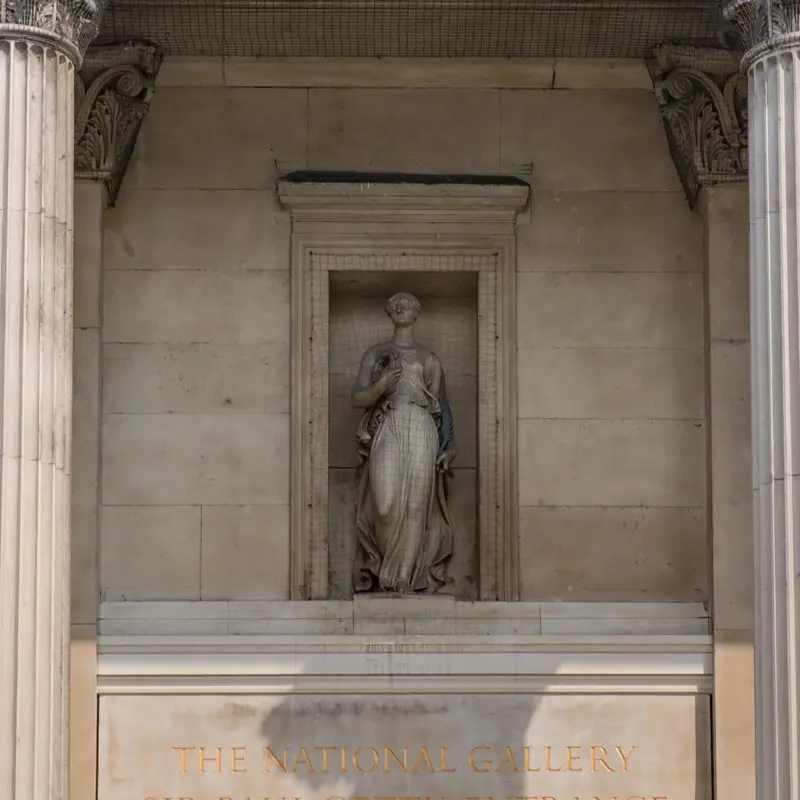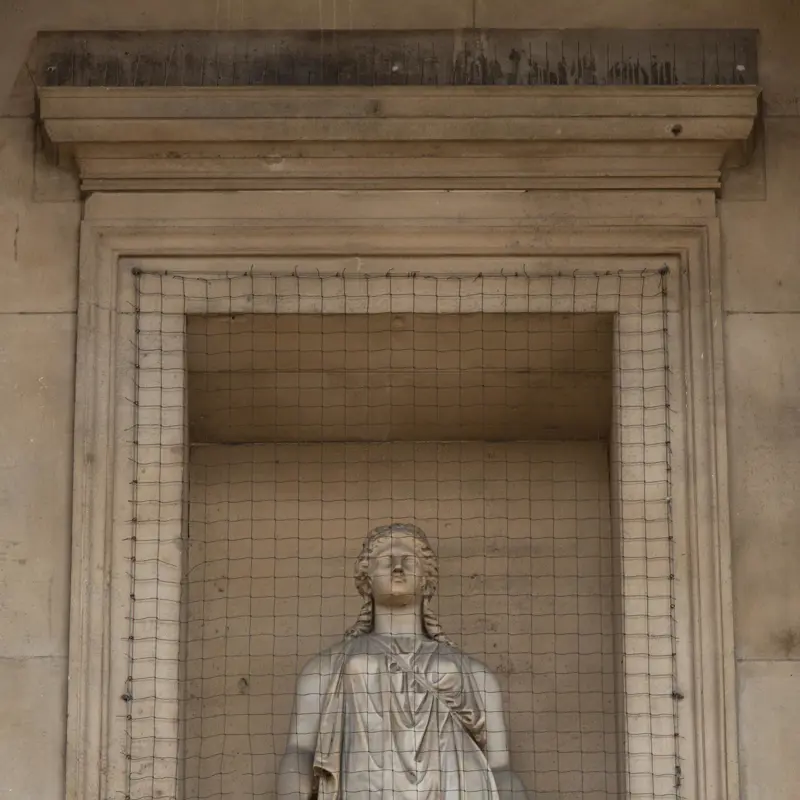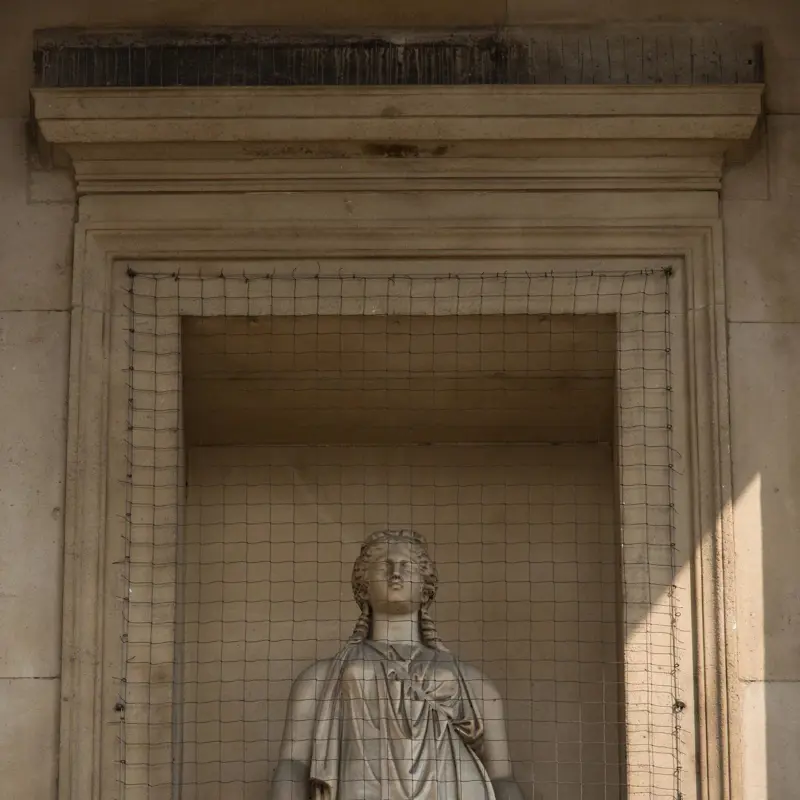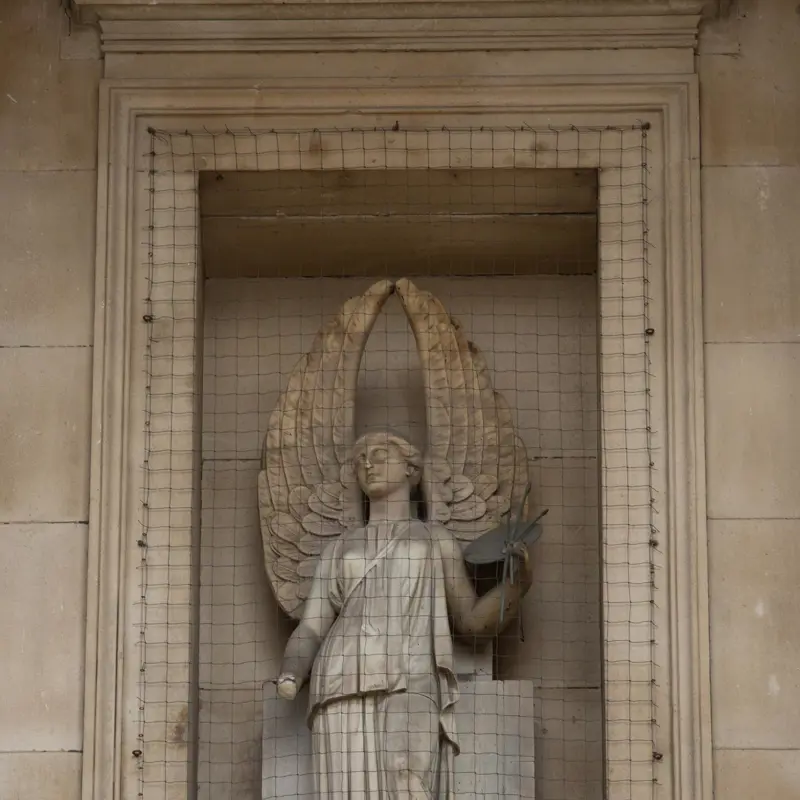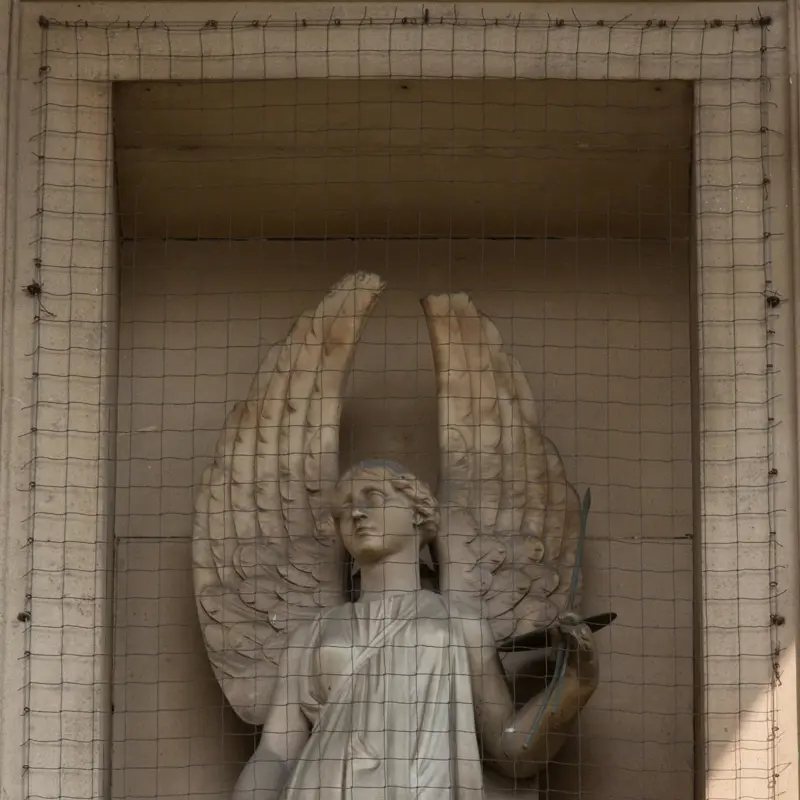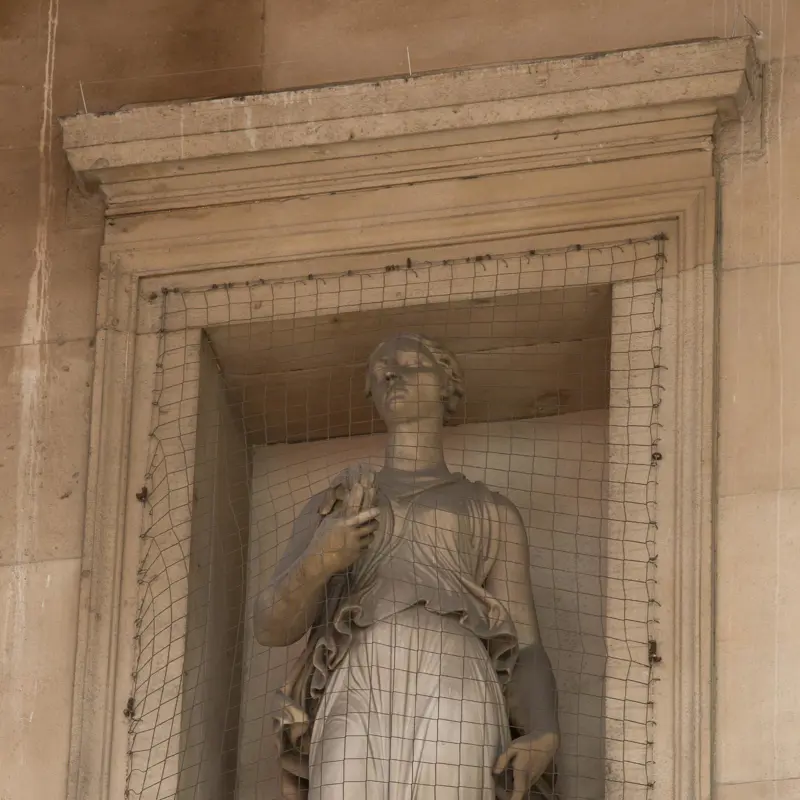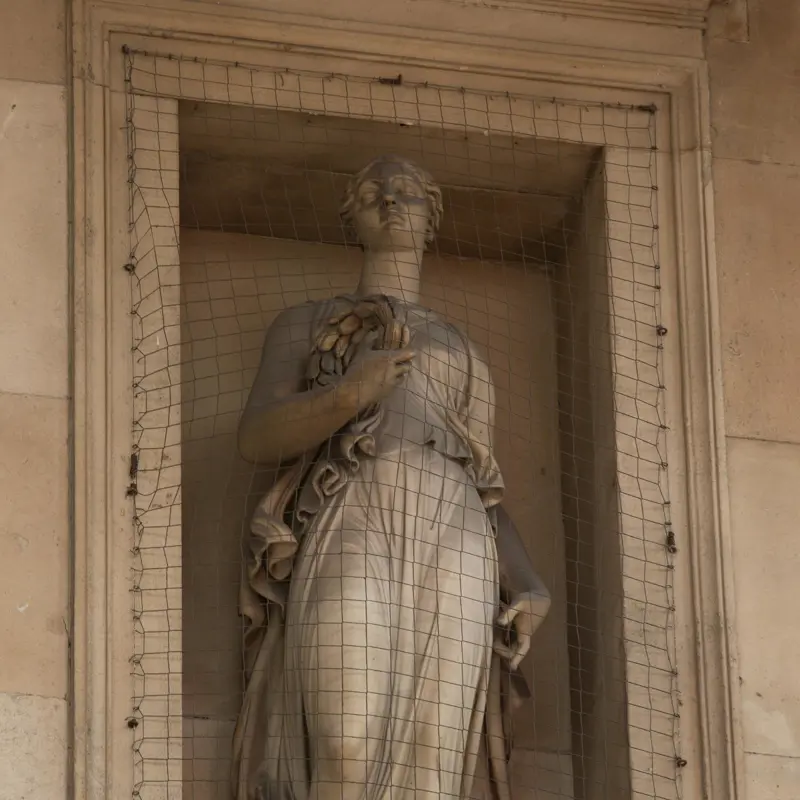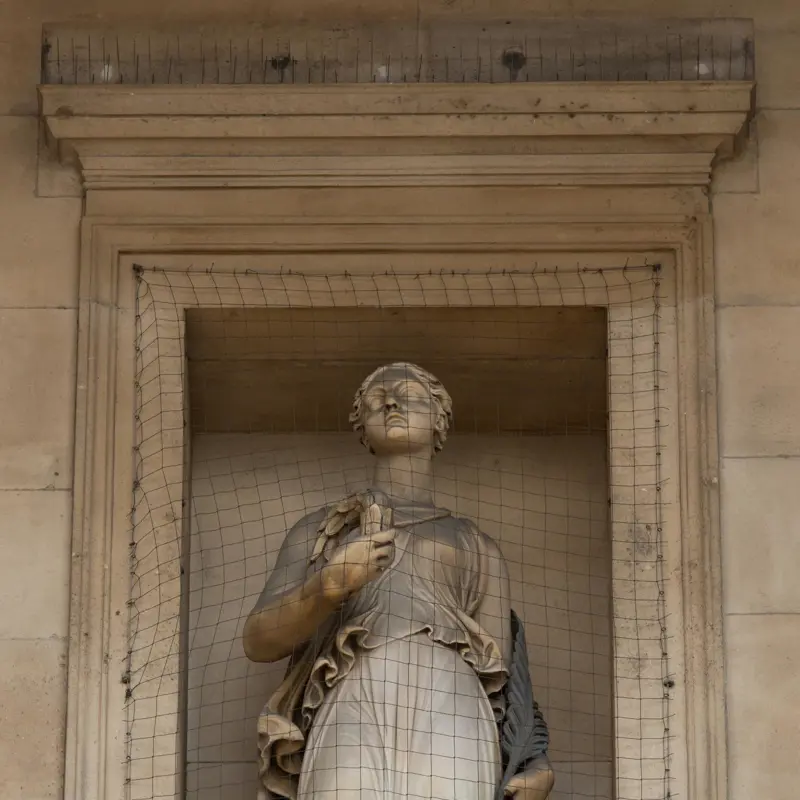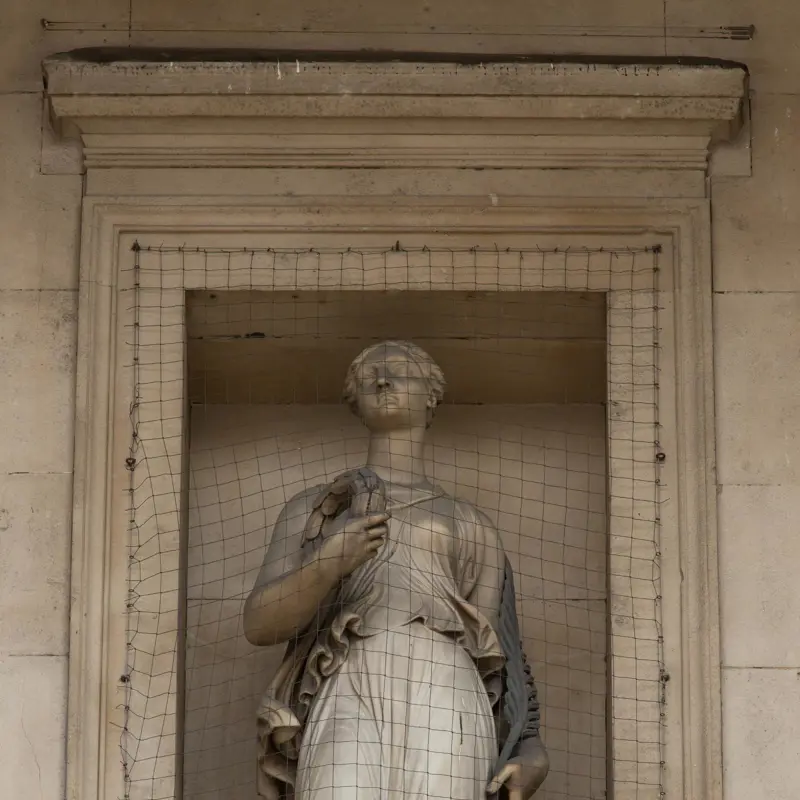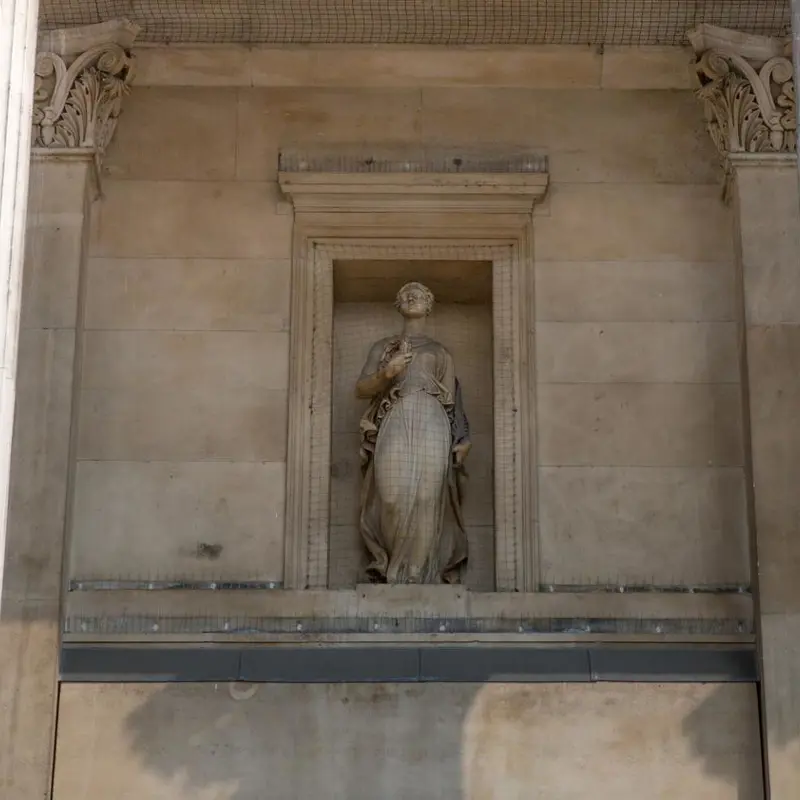John Flaxman, finished and later altered by Edward Hodges Baily, 'Minerva', by 1830, altered about 1834
About the work
Overview
At the eastern end of the Gallery, overlooking the church of St Martin-in-the-Fields, is a statue of Minerva, the goddess of wisdom.
It was originally designed by the British neoclassical sculptor, John Flaxman, as a seated figure of Britannia, brandishing a spear and shield, to appear on Marble Arch, designed as a ceremonial entranceway by John Nash. Flaxman was chosen to provide the commemorative sculptural decoration, but after his death in 1826 this work was divided between his former pupil Edward Hodges Baily, Charles Rossi and Richard Westmacott. Work started in 1827 but was halted after the death of George IV and then scaled back after 1831, when the new king, William IV, in a cost-cutting exercise, got rid of its sculptural elements. These were repurposed at Buckingham Palace and the National Gallery.
Now blank, Minerva’s shield originally depicted the head of Lord Nelson, to commemorate his victory over Napoleon at Trafalgar. Baily transformed Britannia into Minerva by removing Nelson from the shield. The balustrade over the east front had to be strengthened to support the statue’s nine-ton weight.
Key facts
Details
- Full title
- Minerva
- Artist
- John Flaxman, finished and later altered by Edward Hodges Baily
- Artist dates
- 1755 - 1826; 1788 - 1867
- Date made
- by 1830, altered about 1834
- Medium and support
- Portland stone
- Acquisition credit
- Commissioned by the Office of Works for the Marble Arch, and installed on the Gallery in 1834
- Inventory number
- H216
- Location
- Gallery Exterior: East Front
- Collection
- Contextual Collection
About this record
If you know more about this work or have spotted an error, please contact us. Please note that exhibition histories are listed from 2009 onwards. Bibliographies may not be complete; more comprehensive information is available in the National Gallery Library.


